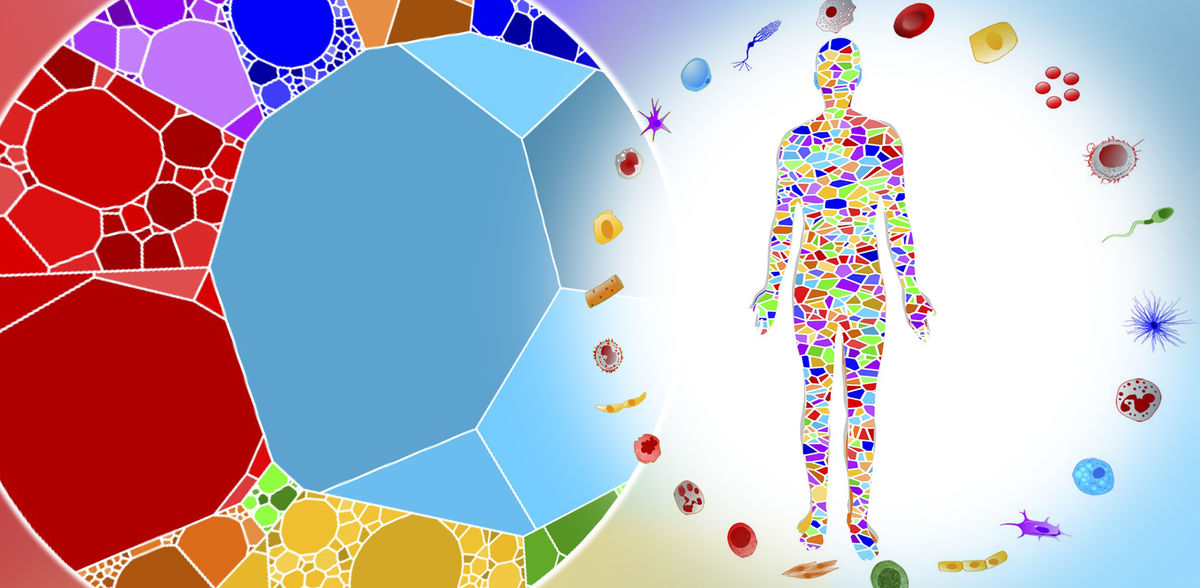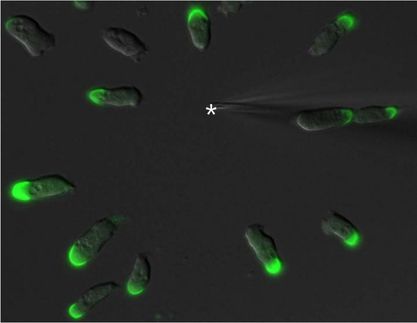Cellular Cartography
"For the first time, we have systematically measured the size and abundance of cells across all major tissues and organs"
An international team of scientists has created the first comprehensive index of human cells, mapping the sizes and abundance of all cell types across the entire body. This groundbreaking study, published in PNAS, reveals surprising mathematical patterns underlying cell size and number, challenging our fundamental understanding of cell growth and proliferation.
Led by Dr. Ian Hatton of the Max Planck Institute for Mathematics in the Sciences, the researchers compiled an extensive dataset of over 1200 distinct cell groups. They estimated size ranges, mass, and cell counts for each group across 60 tissue systems in three reference humans - an adult man, woman, and child. "For the first time, we have systematically measured the size and abundance of cells across all major tissues and organs - spanning seven orders of magnitude from tiny red blood cells to large muscle fibers," elaborated lead researcher Dr. Ian Hatton of the Max Planck Institute.
While many contemporary works focus on molecular profiling, this study adopts a classical cell biology approach, quantifying morphological features of known cell types. They integrated decades of histological and anatomical research to establish a holistic quantitative framework. The team discovered a striking near-inverse relationship between cell size and abundance, implying a trade-off between the two variables. Essentially, as cells get larger in size, their numbers decrease proportionately so that cells of all sizes contribute equally to the body's biomass. This suggests there is no universally optimal cell size, but rather metabolic constraints and functional niches ensure that cells are efficiently "spread" across the entire size spectrum.
The researchers also found that cell size variability is largely constant across cell types, pointing to universal mechanisms regulating their size. "The body exhibits patterns reminiscent of natural laws governing many complex systems, from oceans to asteroids," said Dr. Hatton. "A better grasp of these mathematical rules could reveal key principles of cell growth mechanisms relevant to developmental processes, cancer, regeneration, and aging." The comprehensive cell index provides biologists with an invaluable reference to contextualize molecular studies and advance medical understanding. Widespread adoption of these data could positively affect drug development, medical diagnostics, and disease progression modeling.
"Our holistic map serves as a foundation to support the establishment of a human cell atlas with molecular resolution," concluded Dr. Hatton. "With potential health applications, these findings underscore the importance of regarding cells in their physiological context as part of a complex but organized system." To facilitate this sentiment, the team has made their extensive data accessible through an interactive online tool that allows the hierarchical exploration of cell parameters across tissues and cell types, while providing methods and sources for each cell type.
Original publication
Most read news
Original publication
Ian A. Hatton, Eric D. Galbraith, Nono S. C. Merleau, Teemu P. Miettinen, Benjamin McDonald Smith, Jeffery A. Shander; "The human cell count and size distribution"; Proceedings of the National Academy of Sciences, Volume 120, 2023-9-18
Organizations
Related link
Other news from the department science

Get the life science industry in your inbox
By submitting this form you agree that LUMITOS AG will send you the newsletter(s) selected above by email. Your data will not be passed on to third parties. Your data will be stored and processed in accordance with our data protection regulations. LUMITOS may contact you by email for the purpose of advertising or market and opinion surveys. You can revoke your consent at any time without giving reasons to LUMITOS AG, Ernst-Augustin-Str. 2, 12489 Berlin, Germany or by e-mail at revoke@lumitos.com with effect for the future. In addition, each email contains a link to unsubscribe from the corresponding newsletter.




















































